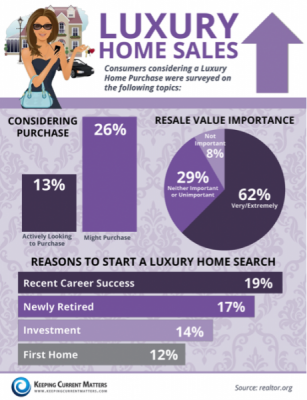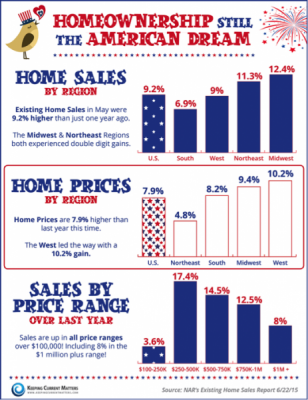<h1>Lorem Ipsum Dolor Sit Amet</h1>
<p>
Lorem ipsum dolor sit amet, <b>consectetur adipiscing elit</b>. Sed do eiusmod tempor
incididunt ut labore et dolore magna aliqua. Ut enim ad minim veniam, quis nostrud
exercitation ullamco laboris nisi ut aliquip ex ea commodo consequat.
</p>
<p>
Duis aute irure dolor in reprehenderit in voluptate velit esse cillum dolore eu
fugiat nulla pariatur. Excepteur sint occaecat cupidatat non proident, sunt in
culpa qui officia deserunt mollit anim id est laborum.
</p>
Archives
Boston Globe Article
Four Common Staging Mistakes Every Seller Makes—and How to Avoid Them
Last time, we focused on commonly overlooked home staging tips. This time, we are continuing along those lines with some common mistakes that home sellers routinely make when staging their homes to sell.
When selling your home, it’s easy to make mistakes. Here are a few tips to help you avoid some of the most egregious errors:
1. Overdoing one color/theme. You may have heard that sticking to a theme in each room—particularly when choosing colors or decorations—is important. But equally as important is keeping a balance. You don’t want your buyers to be so distracted by one theme or color that they miss the finer points of your home.
2. Underestimating the power of natural light. No matter how beautiful the home, a dark room is usually not a winner. Remove dark or heavy curtains and try not to obscure windows with large furniture; this will help your buyer visualize your home’s full potential.
3. Failing to maximize space. Buyers love storage space and anything that screams of lots of storage—big closets, built-in bookshelves, etc. Make sure you clean out all of your closets, armoires, shelves, etc. before you show your home, because buyers will likely poke around in them to see how much space you have. One stager recommends investing in a few cute baskets or storage containers to hold small items, if you don’t have time to completely declutter before your first showing.
4. Using poor quality photos in online posting. Many, if not most, buyers start their house hunting with online searching. According to one realtor featured in Realtor Mag, “Most of your selling is online. You’ve got about five seconds to get them to look at the house before they go on to another one. That’s how critical photography is.” If you aren’t using professional assistance, make sure you have a good camera and tripod, and take multiple shots at different exposure settings.
Taylor Henley is an employee of Stage to Move. She collaborates with owner and home staging expert Kara Woods to produce blog posts that reflect the expertise and innovative design strategies of Stage to Move.
How Selling Your Home Can Boost the Economy
A year ago this month, the Economists’ Outlook blog of the National Association of Realtors released an analysis of “pent-up seller demand.” By 2014, a typical homebuyer had lived in his or her house for four years longer than the historical average. Weaker economic conditions, stagnant wages, low interest rates for mortgages and, especially, the housing market crash meant that potential sellers preferred to stay in their homes for longer.
But just as car sales have soared in the past year, so too can home sales—if pent-up sellers start making moves. Mortgage rates remain at historic lows, and home values are up significantly, making this a great time to sell. And in doing so, sellers boost the economy. The NAR’s most recent analysis found that the total economic impact of a typical home sale in the United States is $52,205.
This figure is generated from a median priced home of $176,800. It includes: $15,912 of income generated from real estate industries; $4,429 of additional spending on consumer items such as furniture, appliances, and remodeling; $9,764 of economic “multiplier effect” on general consumer spending from increased income; and $22,100 in construction of new homes, using the standard estimate that one new home is constructed for every 8 existing ones. If a home sells above the median price, the economic impact will be even greater.
Thus, every home sale improves the economy. Consider selling today—Uncle Sam may thank you!
Home Staging 101: What Do Buyers Look For in a Luxury Home?
Now that you know the luxury market is on the rise, here are some tips for you, the seller, to make your home as attractive as possible to the luxury buyer.
A recent survey found the following:
- 54% of luxury buyers indicated a chef’s kitchen as an important feature;
- 44% consider the home’s views of oceans, mountains, or cityscapes as significant;
- 38% responded that the square footage of the property is key attribute;
- 36% included the presence of an expansive master suite as an important factor.
Obviously, there are some features here over which you have little control at this point—namely, the location and the square footage of the property. However, this doesn’t mean that you can’t tailor your home to the luxury buyer. Check out our bedroom (link to post) and kitchen posts for helpful tips, for example. Resale value is also critical; keeping your home in prime condition, with up-to-date amenities, is a big boost here.
You may also want to consider staging your home to cater to a younger generation of luxury buyers. Bolstered by the tech boom and an ambivalence (at best) towards the stock market, millennials (young people in their 20s) now compose the second-largest group of recent home buyers, making up 28% of the pool. (“Generation Y,” the age group just slightly older, ranks first.) According to one developer, these buyers tend to prefer modern touches such as floor-to-ceiling windows, high ceilings, and open floor plans.
If you are thinking about remodeling your home and intend to sell at some point, therefore, consider adding a modern touch. It could add significant value to your home down the road!
How to Stage Your Home During the Holidays

The home market always slows down during the holidays, and understandably so—it can be difficult to search for a new home among the hustle and bustle of the holiday season. But as a seller, keeping your home on the market during the holiday season can be an advantage, if you do it right. Those who are house hunting are probably serious buyers, so the holidays can be a great chance for you to attract the perfect buyer.
The main rule of thumb for home staging during the holidays is simplicity. Decorating your home is fine; just don’t go overboard. Clean and declutter before you decorate, always keeping in mind that the holiday season brings more clutter—furniture for guests, decorations, a menorah, etc.—that can distract the buyer from your home’s finest features. Keep the size of the decorations to a minimum to avoid making your living room seem smaller. Choose ones in colors that coordinate with the room and home décor, and, as one stager helpfully adds, don’t forget to shovel the walkway!
Lastly, be sure to remove your decorations (or delay putting them up) before you photograph your home to sell. Don’t take photos with your holiday decorations. They will distract the buyer, and if your home remains on the market post-holidays, they immediately signal to the buyer exactly how long your home has been on the market.
With our help, you don’t have to fear keeping your home on the market during the holidays. So enjoy your mother-in-law’s famous latkes and rest easy knowing that you may just land a great holiday present—a buyer!
Home Staging Update: The Luxury Market
We know that the housing market has been on the rise lately. According to the Wall Street Journal, “Prices of existing homes sold in the U.S. vaulted to a record high in June, topping the mark set in 2006, as sales increased at their strongest pace in more than eight years.” But what about the luxury market? This niche industry doesn’t always follow general housing trends, so it’s important to keep up to date on the latest news.
Don’t worry—we did your research for you. And it turns out that sales of luxury homes have been hitting record highs in recent years. Domestic purchasers, bolstered by decreasing unemployment rates and growing incomes as the economy recovers, are increasingly attracted to real estate, according to top real estate agents: “Buying real estate has grown more attractive, these young buyers say, compared with the stock market, which appears riskier to a generation that entered the workforce during a market correction.”
Moreover, international buyers continue to augment the luxury home market. The United States is relatively inexpensive (hosting only one of the world’s top ten most expensive cities in the world for real estate, according to Forbes), so it makes sense that luxury buyers would seek to get more bang for their buck here in the United States.
Lastly, and perhaps most importantly: 23% of luxury homebuyers live in the Northeast. This is great news for Westchester and Fairfield County sellers, since it means that a market already exists in the area. Stage to Move can help you market your home to these buyers when you are ready to sell.
Want to stage your home for YOU, not for a buyer? Here are some of our best tips!
Good news: you’ve hired Stage to Move, you’ve followed all of Kara’s excellent advice, and now your home is stunning and show-ready. You just have one small problem: you love your home’s new interior design so much that you no longer want to move!
Don’t worry—we have the perfect solution for you. Stage your new home! Stage to Move can assist with move-in furniture placement and interior design, helping you get that designer feeling right from the get go. Here are some additional tips for you to stage your home for YOU, not for a buyer:
1. Give every room a role. One stager calls this “minimalism with personality.” Too often, we take unused rooms and use them as storage space, but making these rooms into productive spaces can really make a difference for your home. Keep it simple: transform a small room into a large closet by installing shelves; turn your kids’ former playroom into a basic home gym; make a small bedroom into a home office. The sky is the limit, and by sticking to basics, you won’t feel overwhelmed by the design work involved.
2. Make some much-needed upgrades. You likely remember from your post-college renting days that your apartment never looked so good as the day your lease ended and you handed the keys to the landlord. The prospect of losing hundreds of dollars in security deposits was enough to make you take care of anything that needed fixing—and then some. The same goes for selling your home, but it doesn’t have to be this way. Think your curtains could use a facelift? Invest in some new ones. Furniture looking old and stale? Revamp it, redesign it, or simply remove it and treat yourself to that brand-new sofa you’ve been eyeing for months.
Kara also recommends having a professional organizer arrange your kitchen cabinets and drawers. They have some excellent tricks and skills to help you place things exactly where you need them—without the junk!
3. Work on the first impressions. It’s easy to forget about taking care of the front entrance to your home when you always enter through the back. Walk out into your front yard and take a good, hard look at the front of your house—the door, the mat, the landscape, the paint—and you might be surprised by the little things you hadn’t noticed, such as wood rot or chipped paint. Even if you aren’t selling your home, your guests will likely enter through the front, and you don’t want to neglect the first thing they will see when they arrive at your home.
First Time Buyers: How They Can Help You Sell Your Home
There has been a lot of speculation lately about the importance of homeownership to upcoming generations. While homeownership rates have undoubtedly declined since the housing boom of the mid-2000s, there is plenty of cause for optimism about the future.
First, the National Association of Realtors’ (NAR) latest Existing Home Sales Report revealed that first time homebuyers made up 32% of all sales in the month of May. This marks the highest share since September 2012, up from 27% the same time last year. Comparing the housing market to “Furious 7” for its action-packed season, one realtor noted, “A home plays a central role in every family. And now that the recession is over, we’re seeing more events in the lives of families, including weddings, births, new jobs, promotions, graduations, retirements, separations, and the loss of loved ones. These events are naturally leading to thoughts that it’s time to find a new home.”
Second, plenty of studies have shown that homeownership remains central to the American Dream. In one study from the Federal Reserve Bank of New York’s SCE Housing Survey – 2015, 45.6 percent of renters (of 1,205 households) reported that they would strongly prefer owning. More importantly, 60 percent said it was likely they would own their primary residence at some point in the future; almost 2 of 5 respondents reported a probability of 80 percent or higher.
Third, according to Campbell Surveys research director Tom Popik, a change in financing has made loans more affordable to first-time buyers. In late January, the Federal Housing Administration drastically cut its annual mortgage insurance premium rate. This made 3.5 percent down payment loans affordable to buyers with FICO scores and debt-to-income ratios that would hinder them from getting loans elsewhere.
The conclusion is clear: first-time buyers can help you sell your home. According to chief NAR economist Lawrence Yun, “The return of first-time buyers in May is an encouraging sign and is the result of multiple factors, including strong job gains among young adults, less expensive mortgage insurance and lenders offering low down payment programs. More first-time buyers are expected to enter the market in coming months, but the overall share climbing higher will depend on how fast rates and prices rise.” Take advantage of these buyers in the upcoming months as the market continues to improve.
Home Staging 101: Photo Renderings
By now, you probably know that the most effective aspect of home staging is its ability to allow the buyer to visualize himself or herself in your home. If they can virtually “move in,” they will be more likely to make an offer. But did you know that photo renderings can—in many cases—do the same thing for you and for the buyer?
Photo renderings visually demonstrate how a home will look with specifically requested modifications, and they can be a great tool for you as you sell your home. As a seller, renderings can show you how your home will look once it is staged before you invest in staging. For example, if you are wondering how much value will be added to your home if you redo your kitchen cabinets or fix your landscaping, a photo rendering can get you a visual of the results before you commit to the work and expense. Renderings can also show prospective buyers the full potential of a home tailored to their specific tastes and desires.
Check out this great example of a rendering of a home’s outdoor paint color:
For more information, see our “Renderings” tab.







